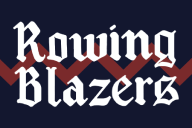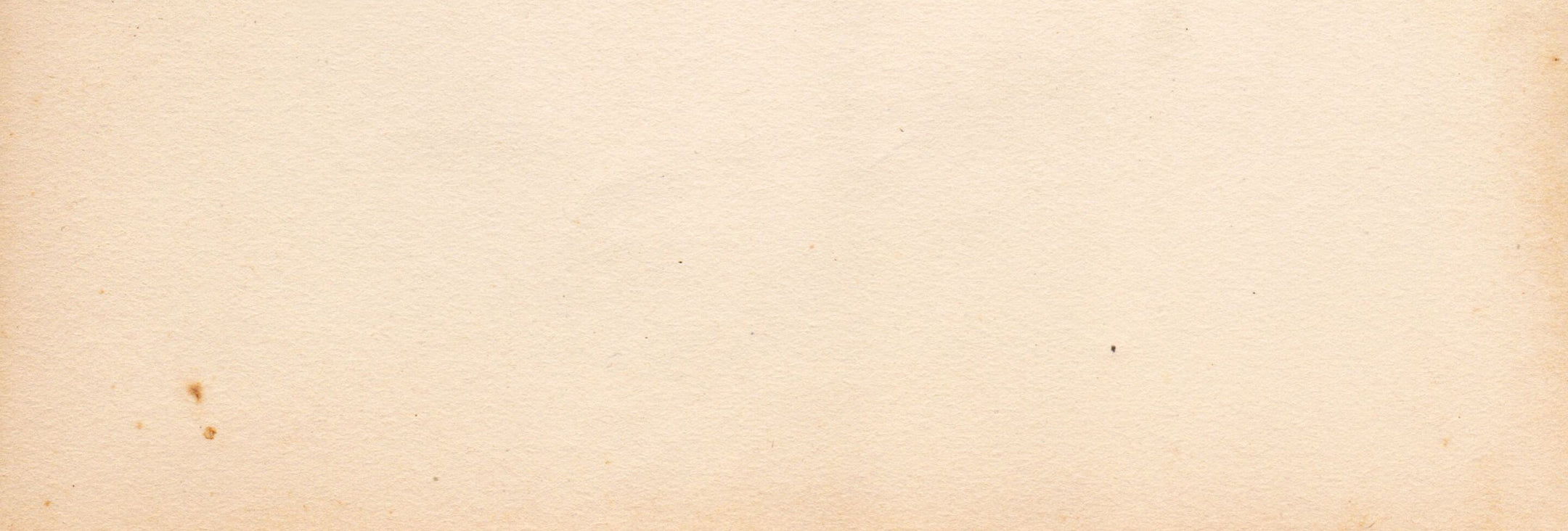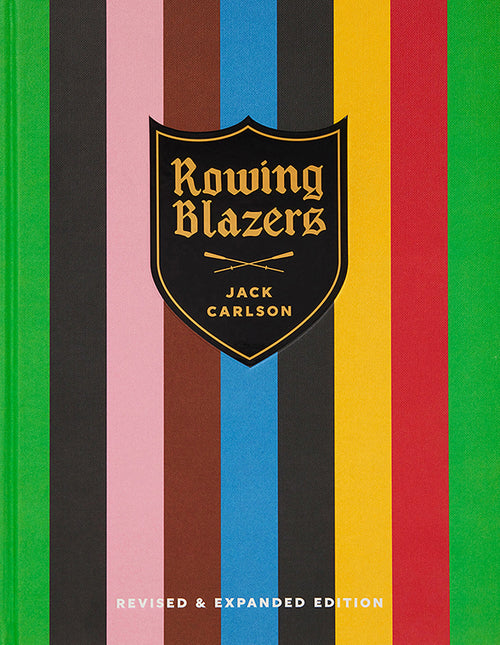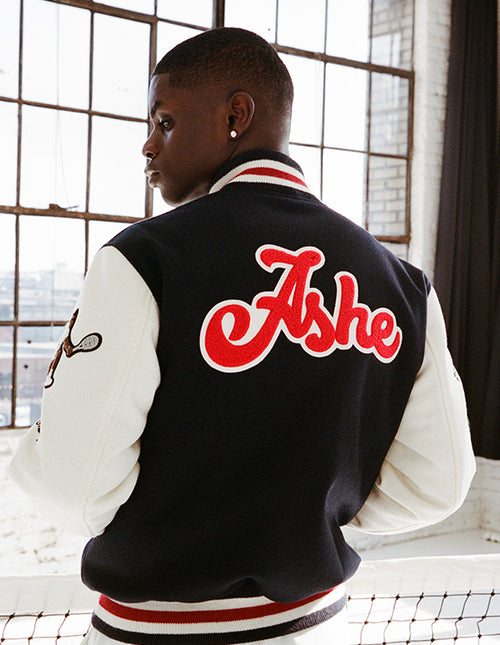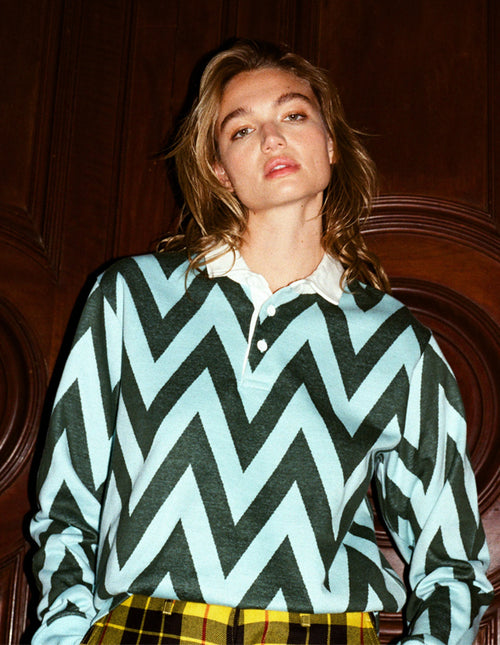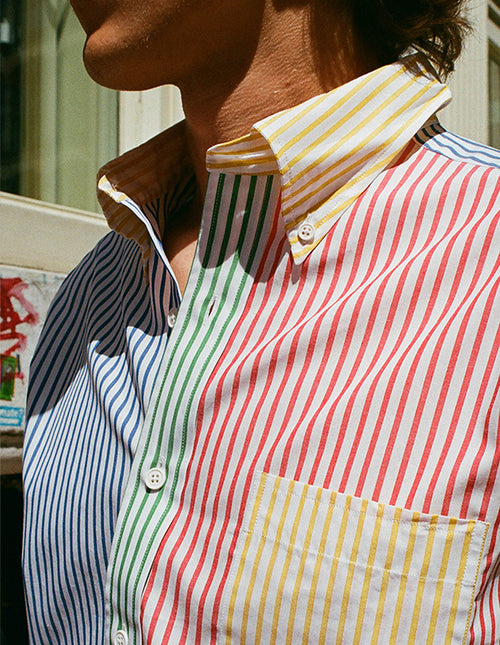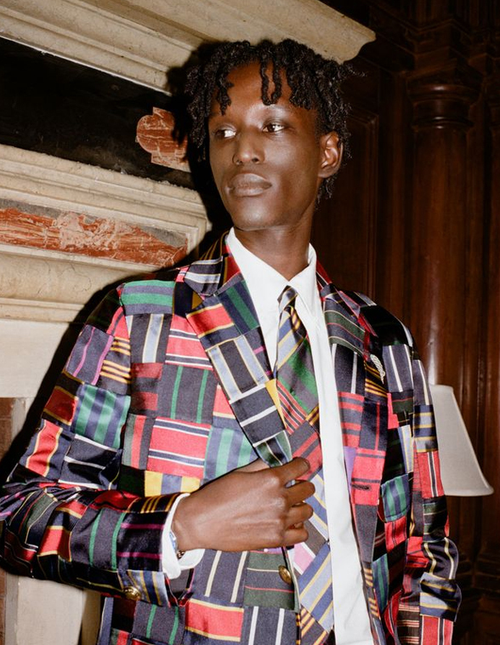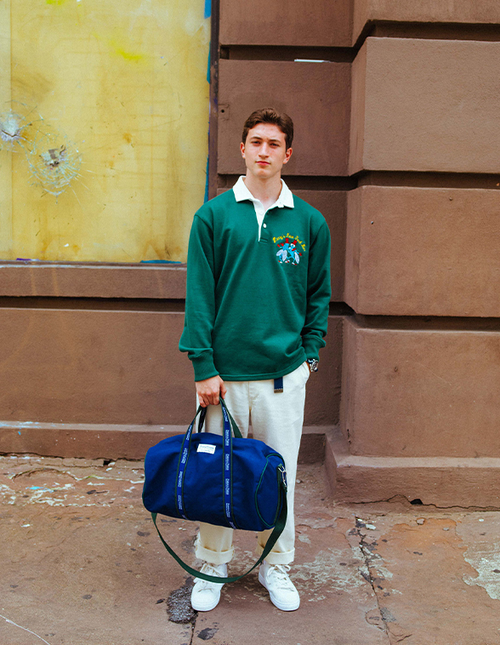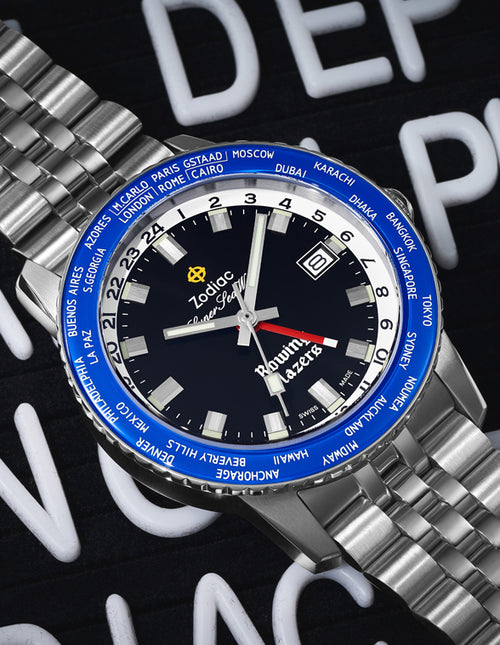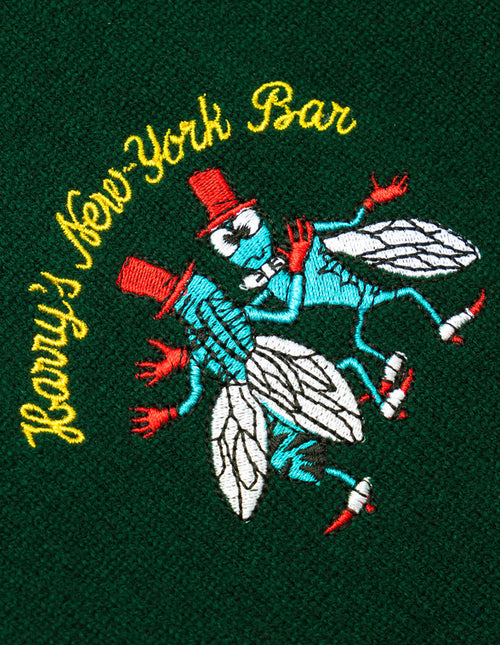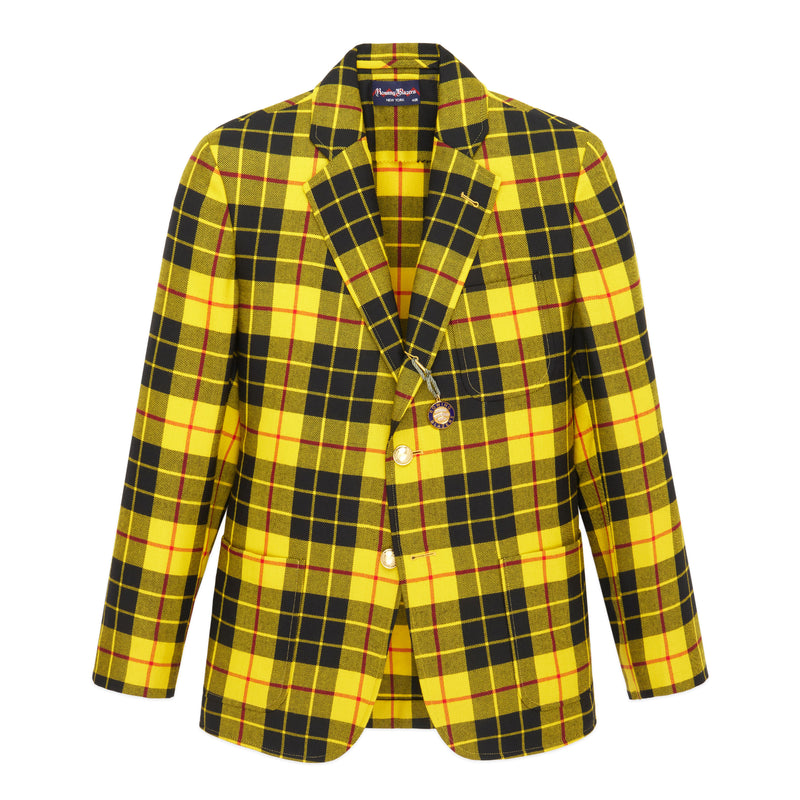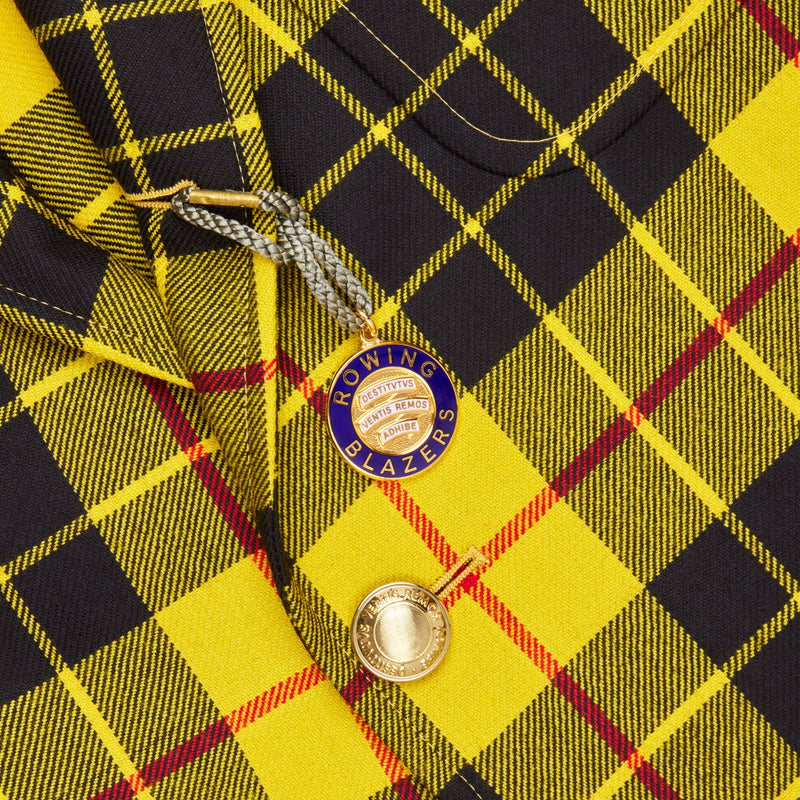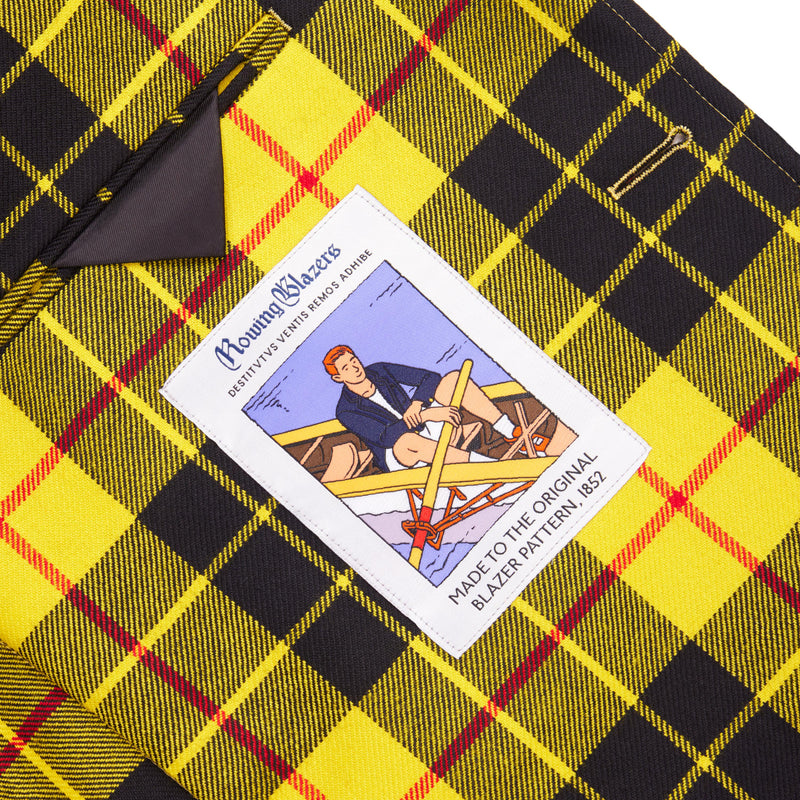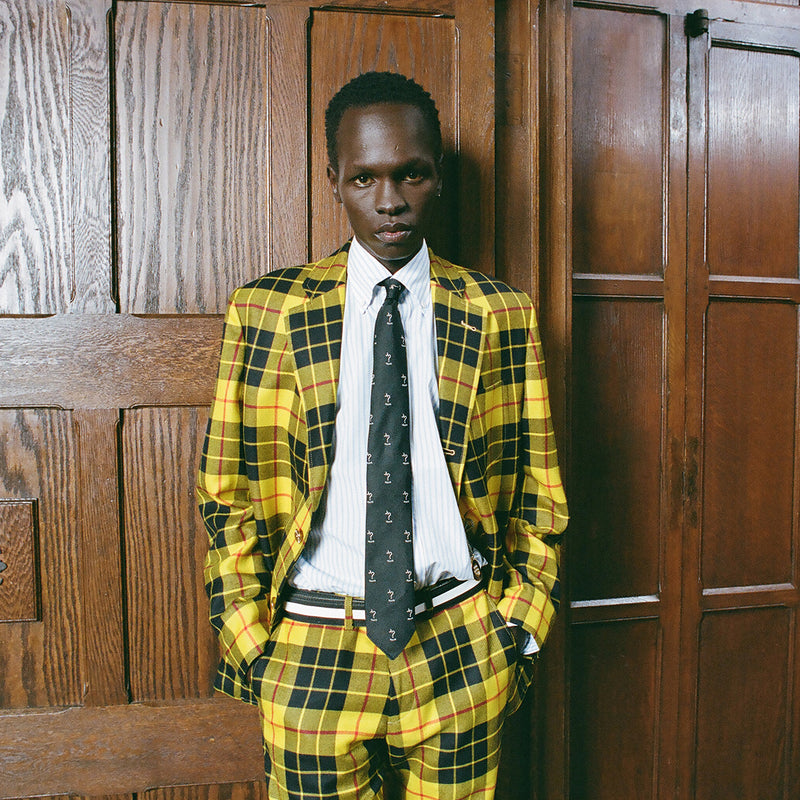-
Men’s MacLeod tartan jacket featuring a 3-roll-2 silhouette, three patch pockets, and quarter-inch topstitch swelled seam finishing. Cut to the original 1852 blazer pattern.
Please note: The handmade cloisonné buttonhole fob seen in the photos is not included. -
3-roll-2 silhouette. Three patch pockets. Unlined back. Self-lined fronts. Ventless. Rowing Blazers house buttons in gold brass. Single-button cuffs. 100% wool. Made in Portugal. Dry clean only.
-
-
Tartan — often referred to as “plaid” in North America — is a patterned cloth (historically woven wool) made up of intersecting horizontal and vertical bands of colored thread. Though its history reaches far and wide, tartans today are most closely associated with Scotland, where by the early eighteenth century distinct patterns (called “setts”) were adopted by specific regions throughout the country.
Originally, the colors used in a given tartan sett were dictated by the local availability of natural animal- and vegetable-based dyes, and were therefore closely related to the region in which the tartan was made. These natural dyes tended to produce more muted colors, and the resultant setts are now referred to as “ancient” tartans. Later, when synthetic dyes became more widely available in the mid-nineteenth century, colors became much darker and bolder, and unique setts began to be adopted by specific clans, families, and institutions. These tartans are commonly called “modern tartans”.
Clan MacLeod is a Highland Scottish clan primarily hailing from the Isle of Skye. This bold yellow dress version of their tartan — sometimes referred to as “Loud MacLeod” — is perhaps the clan’s most recognizable, and is most closely associated with the Dunvegan family. The sett was first described by Sir Thomas Dick Lauder: “MacLeod (of Dunvegan) has got a sketch of this splendid tartan, three black stryps upon ain yellow fylde.”
{{ props.resultsCount }} recommended products for “{{ searchTerm }}”
See All
Suggested Searches:


